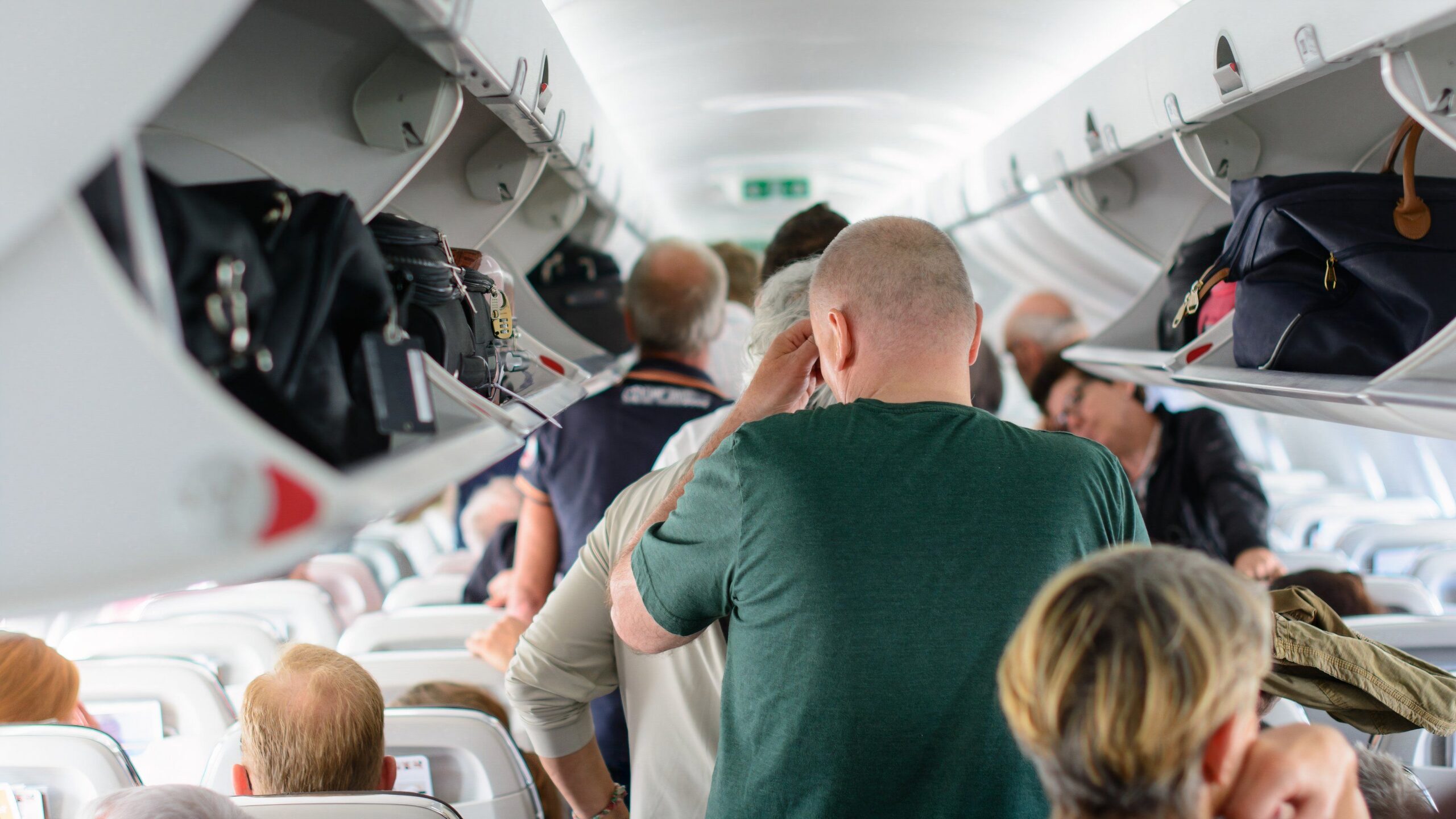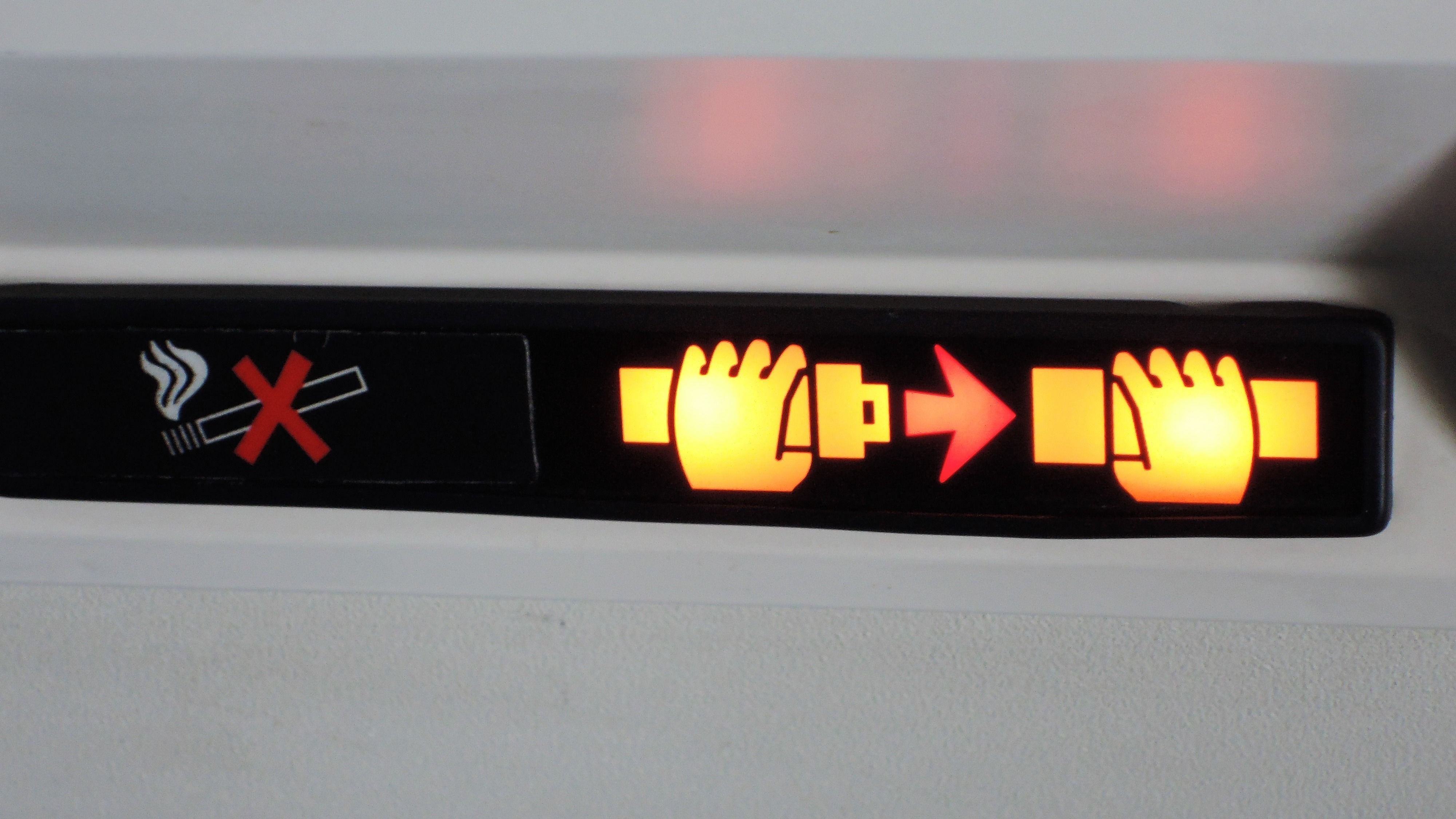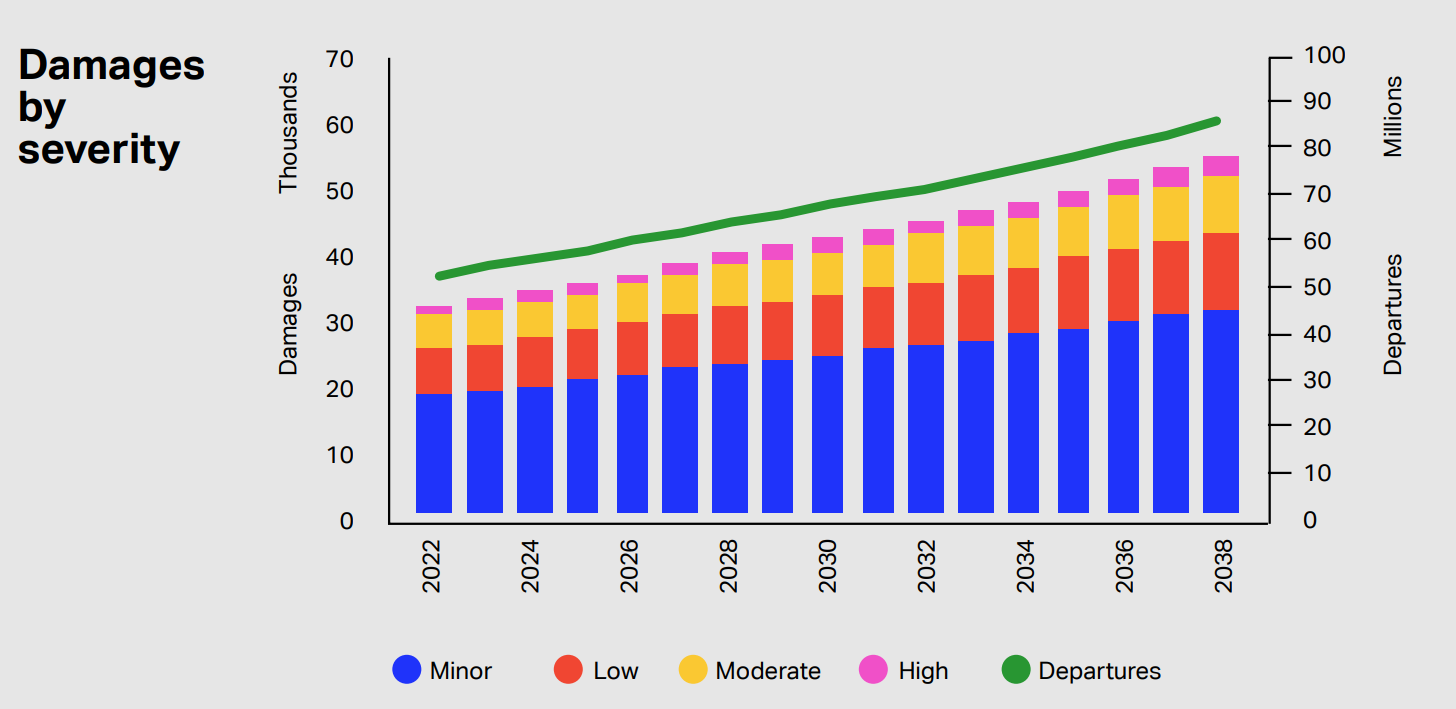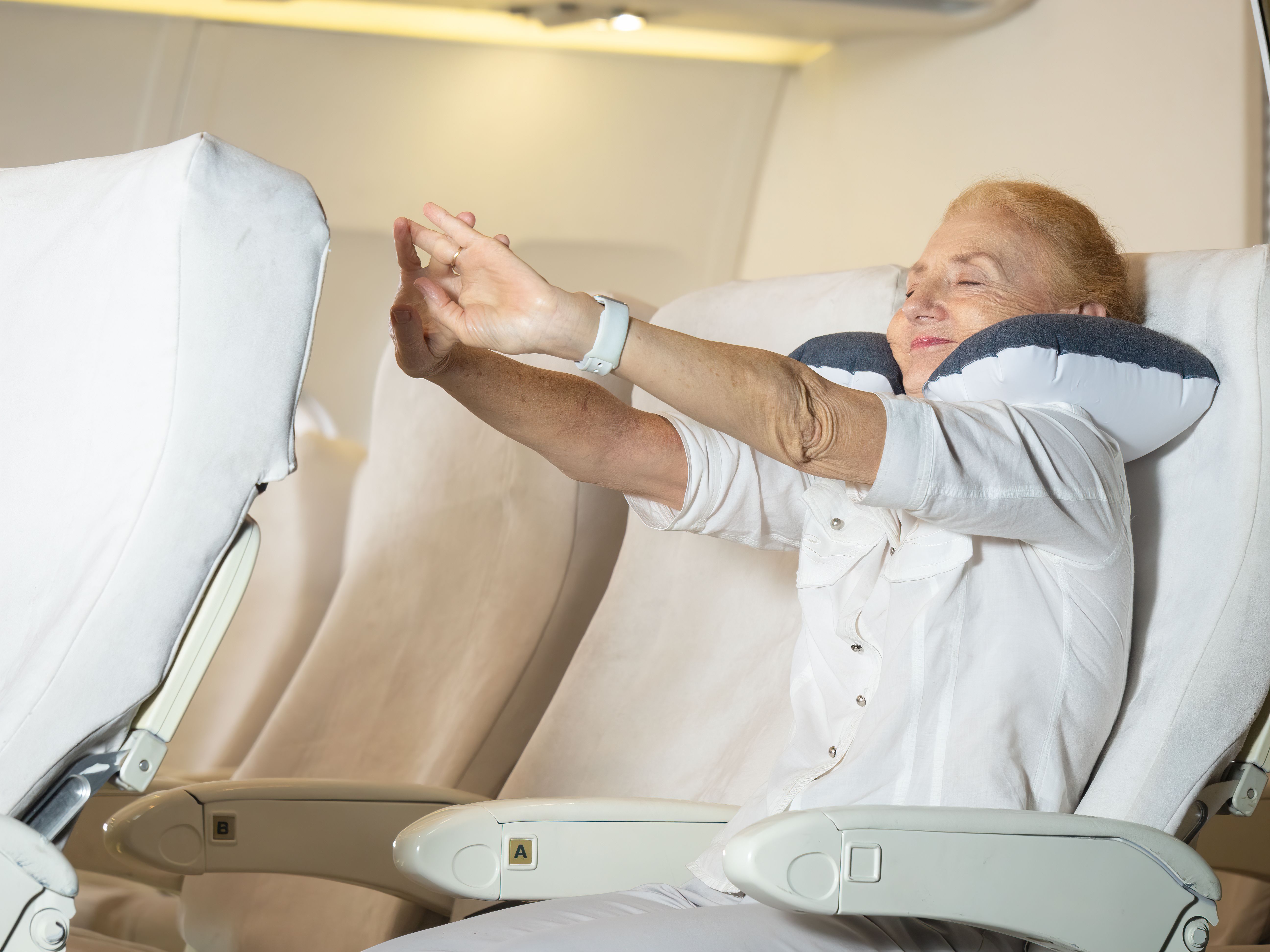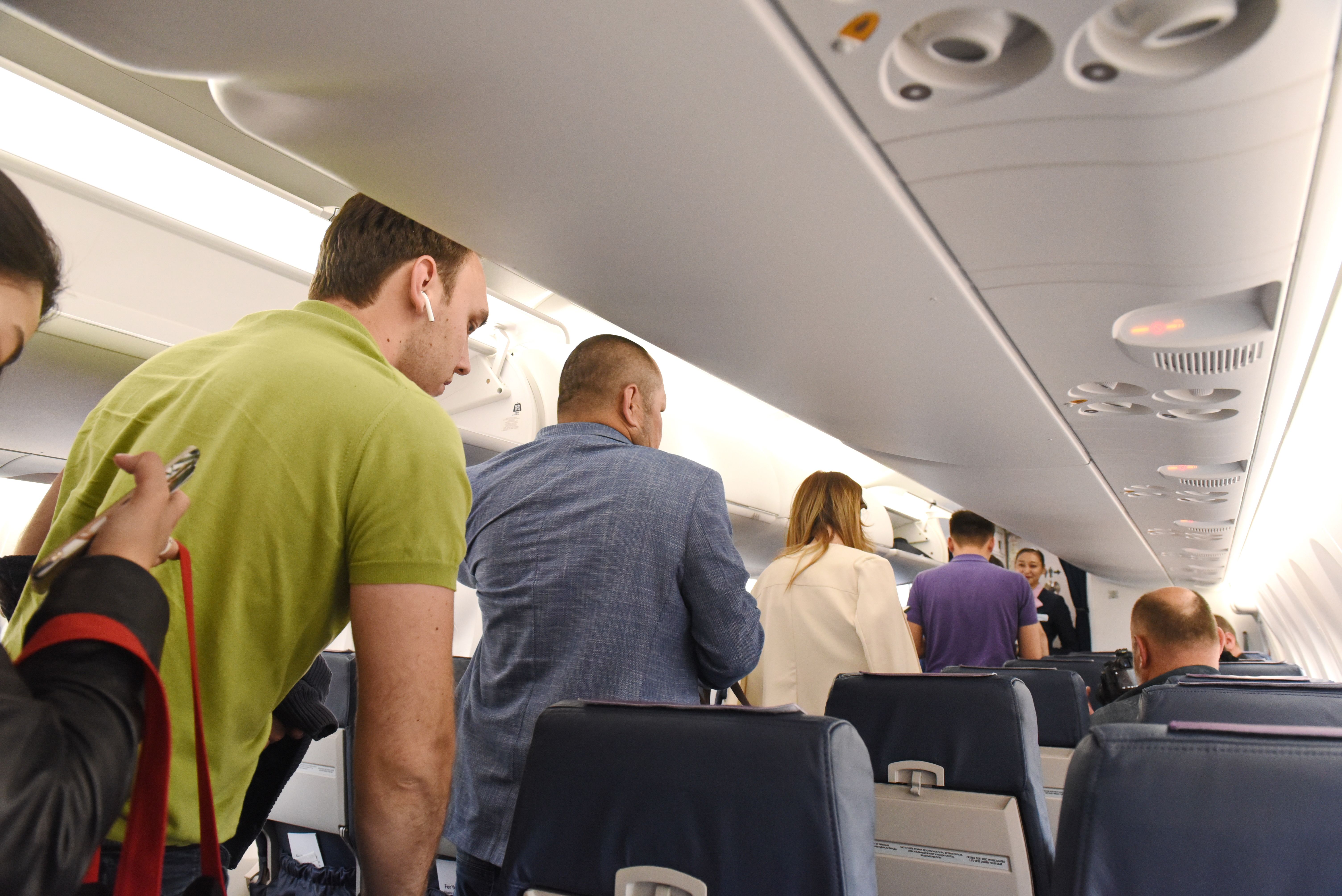Summary
- FAA regulations prohibit standing once the plane lands; keep the seatbelt on until the sign goes off.
- Rising immediately risks accidents & injuries; offer aisle space to those with health issues or anxieties.
- Organized deplaning is timely and orderly; being the first to rise won’t get you off faster.
Some passengers believe that the best thing to do when the aircraft touches down is to leap out of their seats and immediately begin scrambling to get their bags from the overhead lockers. Rapidly, the aisle becomes a mass of sweaty, seething bodies, crammed together, all risking concussion from others desperately trying to extract suitcases from the bins.
You’re not going anywhere until we all are, so what’s the point? It can take several minutes to attach the jetbridge and open the doors, not to mention all those other people in front of you to deplane.
There are four good reasons to stay seated for a little bit longer after your aircraft lands, which will benefit you and those around you too.
1
You’re not allowed
If the seatbelt sign is on, you’re breaking FAA regulations.
Standing up ‘as soon as the plane lands’ should be clearly defined from standing up ‘as soon as the seatbelt sign goes off.’ Those are two very different things, and if you do choose to stand up ‘as soon as the plane lands,’ you will be in violation of
FAA
14 C.F.R. 121.317(f) and could be liable for civil penalties of up to $10,000.
Photo: Jim Lambert I Shutterstock
Not only that, but there have been numerous examples of ground-based accidents over the years, with planes hitting other planes, planes colliding with tugs, even planes being hit by vehicles. If you’re unstrapped and – perish the thought – standing up, you could end up with a nasty injury. As you can see below,
IATA
projects that, as airline traffic continues to increase, there will also be an increase in these sorts of incidents.
2
Other people may need to stand up more than you do
Leave space available for those who might be desperate to get out of their seat
After a long flight, particularly in economy, aches and pains can get unbearable. According to Statista, around a third of passengers in the USA are over the age of 50, and some will be much older than that (remember that 101-year-old American Airlines kept thinking was a baby?) and may be desperate to get up out of their seat to ‘unkink.’
Photo: panyajampatong | Shutterstock
Others may be experiencing anxiety, stress, or be a ‘type A’ personality, such as psychologist Gaynor Parkin, who explained to Stuff that standing is preferable to sitting and waiting:
“You always want to go on to the next thing… you want to get off and get on with the day.”
If you’re not in pain, physically or mentally, why not just stay seated and enjoy another chapter of your book?
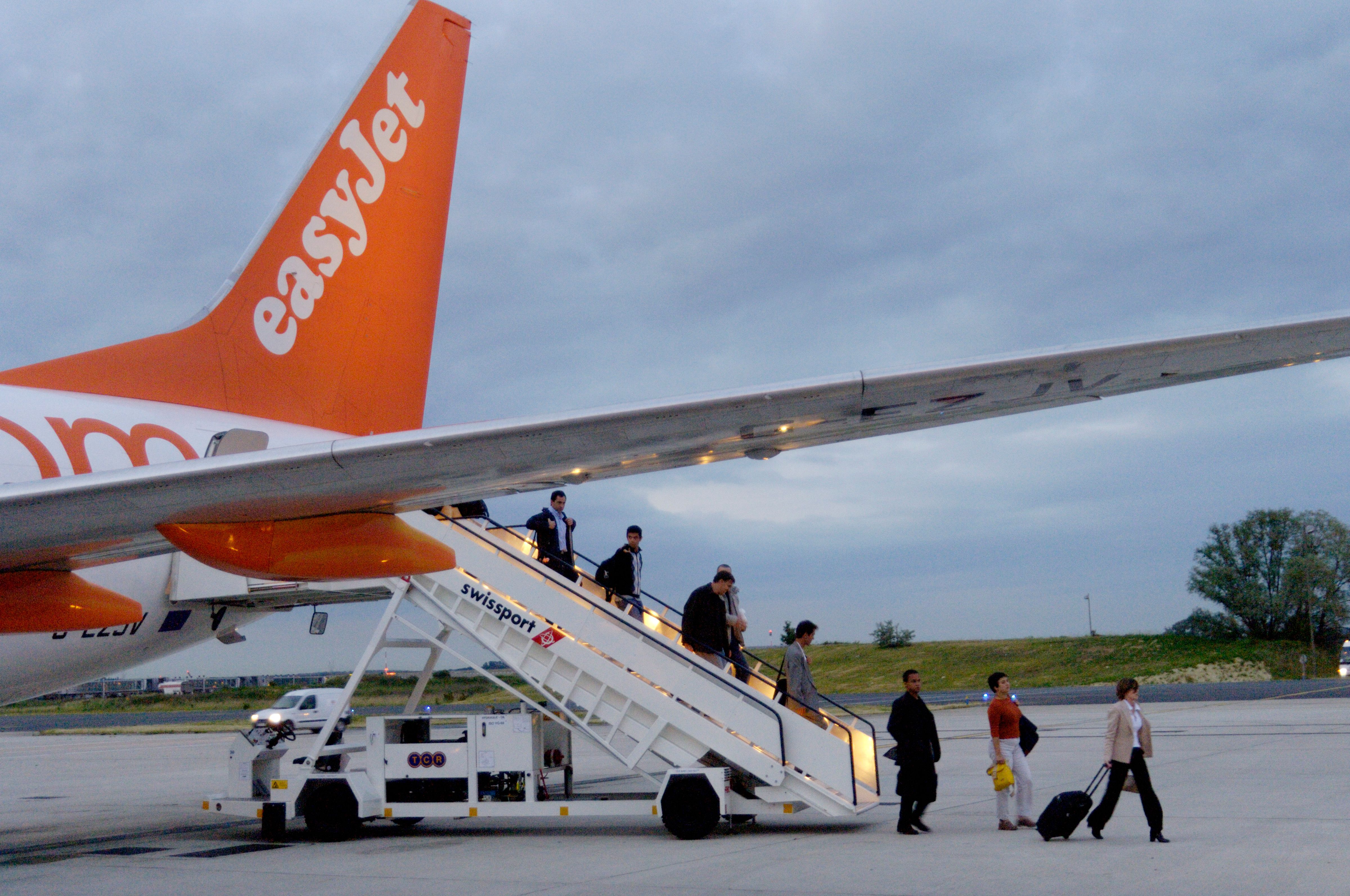
Related
What’s The Quickest Way To Disembark An Aircraft?
The current disembarking method is a chaotic free for all, but is a more organized system feasible?
3
If you’re window or middle, you probably can’t
If you’re an early stander, just book the aisle seat, yes?
If there’s one thing worse than an aisle full of anxious travelers, it’s watching the middle seat passenger doing the ‘one knee on the seat’ stance in their row as they wait for the aisle to clear. In a narrowbody or regional airplane, this often means they’re cricking their neck at a painful-looking angle. Why?
No progress will be made until the aisle has cleared, so sit back and relax. If your aisle neighbor is an early stander, happy days; you now have space to organize your belongings with the use of their empty seat. But aisle passengers should not be criticized if they choose to remain seated for longer.
4
You are not getting off any sooner
Deplaning takes as long as deplaning takes
On the vast majority of flights, there’s a sort of orderly departure to the deplaning process. The aisle passengers will stand and collect their belongings from the bins first, but passengers from further back rows will usually wait while the middle and window seat passengers also stand up and get their things.
Photo: Vladimir Tretyakov | Shutterstock
If you’ve got a really tight connection, let the crew know before landing. They can sometimes move you to a seat nearer the front or expedite your exit from the aircraft to help. Sometimes, they can even hold the departing plane for a short while. But even if you’re at the back of the plane, with no hope of getting through the crowds, deplaning will only take you a little longer than the people at the front.
In a few minutes, we’ll all be in the same Border Control queue, too.
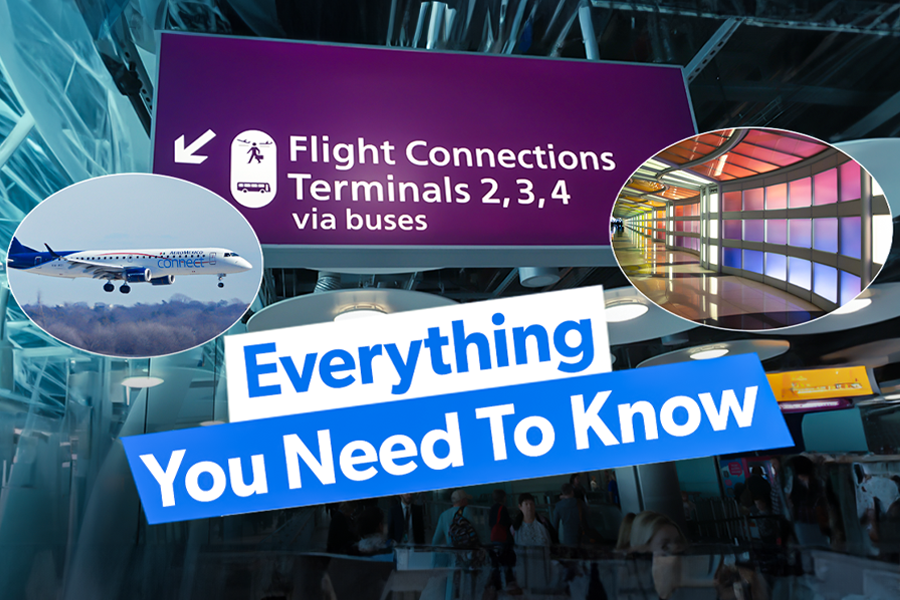
Related
What Should You Know Before Taking A Connecting Flight? 5 Top Tips
Catching a connecting flight can be a stressful ordeal. But preparation can help things go smoothly.
If you do prefer to stand up earlier…
If you’re a person who is desperate to get out of your seat as soon as the seatbelt sign goes off, you do you. As long as the whole plane isn’t full of people like you, it shouldn’t be an issue.
But seeing as you’re standing up there already, how about helping some of those around you to get their coats and cases down from the bins?
Operating with urgency is not a ‘superpower,’ but do you know what is? Common courtesy and having some consideration for those around you.

